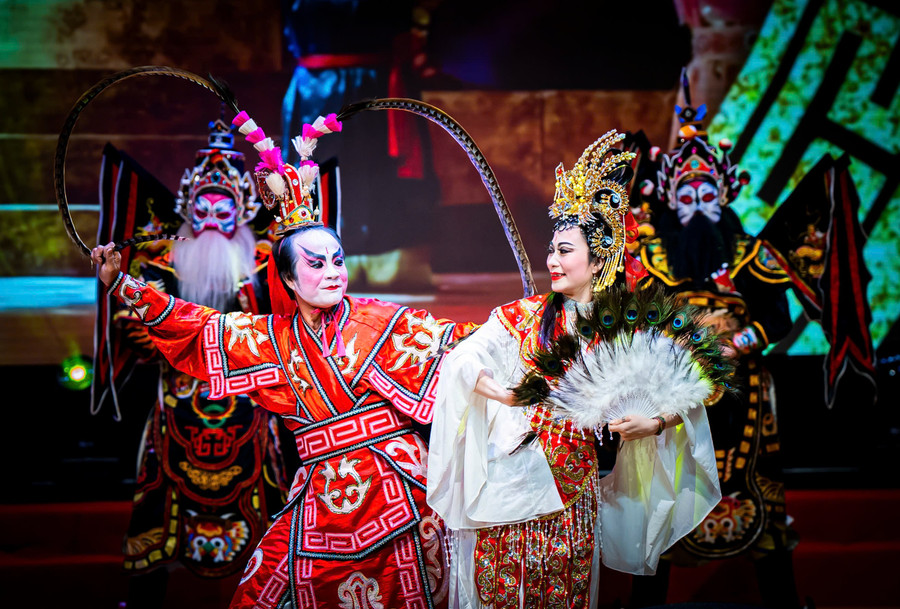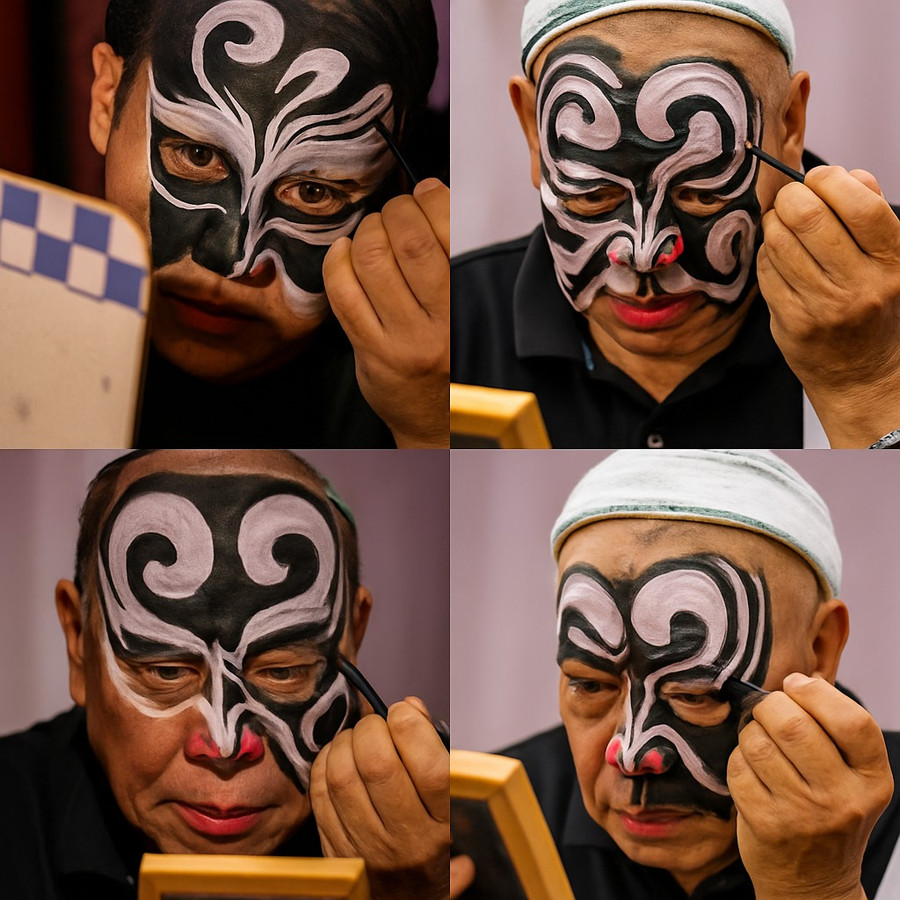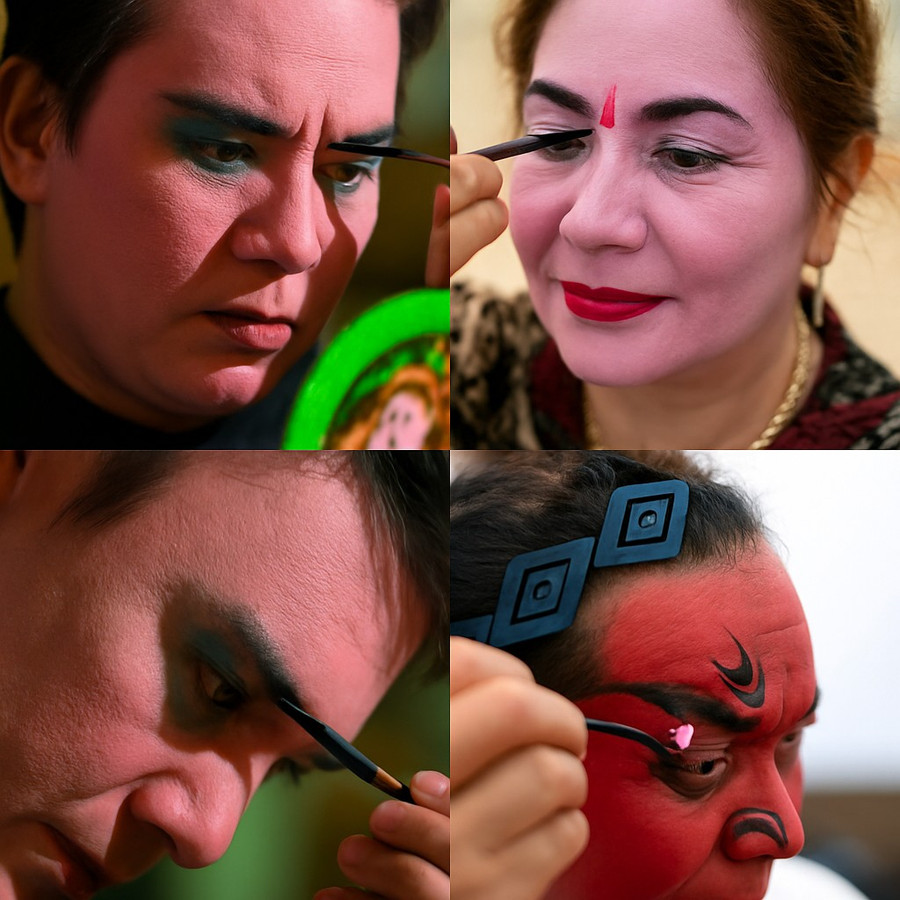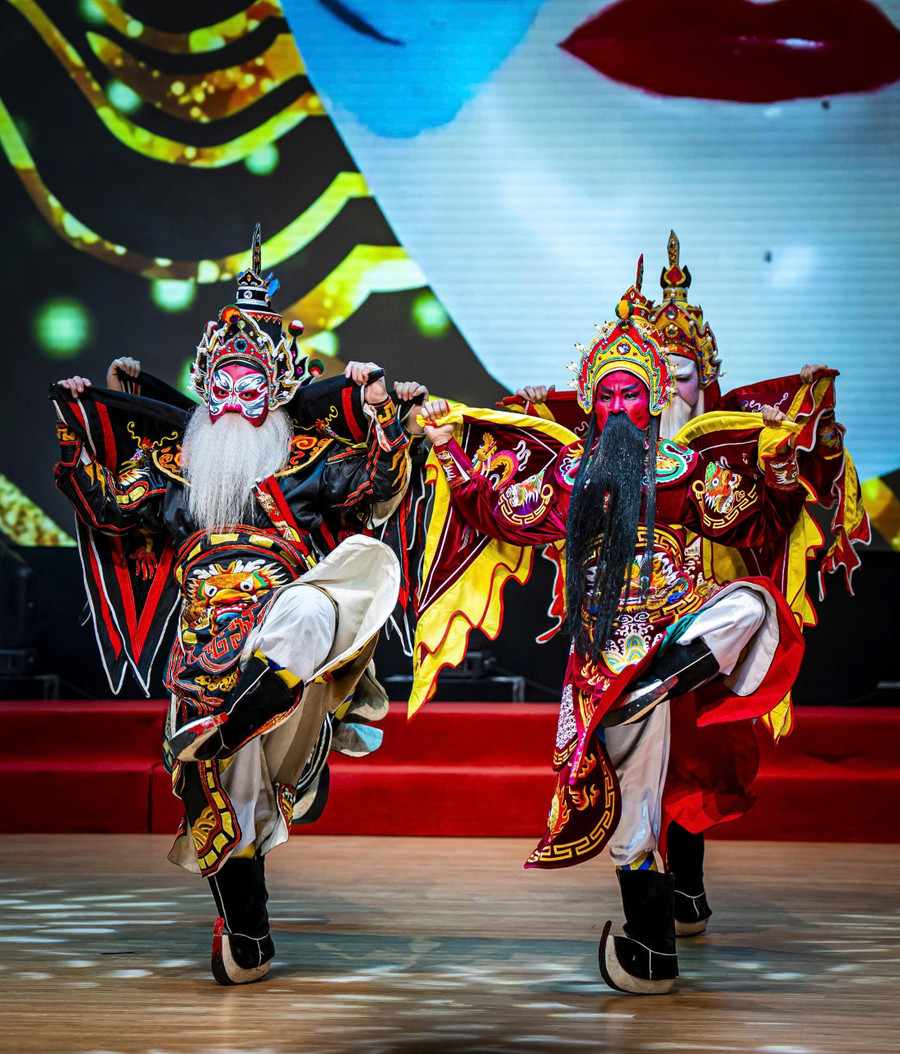Binh Dinh (formerly) has long been known as the "Land of Tuong" - the cradle that produced many famous stage figures such as Dao Duy Tu, Dao Tan, and a series of renowned traditional opera troupes. Here, Tuong is not just a traditional art form, but has become an integral part of the people's consciousness.

In traditional Vietnamese opera (tuồng), makeup – or "face painting" – plays a special role. Artists not only need to know how to sing, dance, and act, but they must also paint their own faces before stepping onto the stage. This is not simply about embellishment, but about breathing life into the character – from the colors and lines to the composition, everything must adhere to traditional conventions while simultaneously reflecting the personality, fate, and social class of the role.

Traditional Vietnamese opera artists are taught face painting from the very beginning of their careers. However, each person is only allowed to have their face painted by the teacher once – and only half of the face is painted. The rest must be completed by the student themselves. In particular, the artist must use both hands to paint each side of the face – a feat requiring skill, perseverance, and a deep understanding of art.

The makeup techniques in traditional Vietnamese opera consist of three main methods: applying foundation, highlighting, and stretching the face. The colors must be bold and the lines clear to enhance facial expression, even when the artist is standing tens of meters away from the audience. This allows the audience to understand the character's nature – loyal or treacherous, righteous or evil – simply by looking at the face.
Young artist Thai Phien shared: “In traditional Vietnamese opera, makeup is a very important element. Actors not only need technique, but also subtlety, an understanding of aesthetics, and the characteristics of the character to accurately portray their personality through each brushstroke.”
People's Artist Xuan Hoi shared: "Face painting cannot be done arbitrarily, because the audience can guess the character just by looking at the face. Each type of face - red, black, striped, fierce, or gentle - evokes a personality. When combined with dialogue, movements, and costumes, the character truly comes to life on stage."

For a long time, traditional Vietnamese opera (tuong) has been an indispensable source of spiritual nourishment for the people, especially in coastal areas. Despite the vicissitudes and ups and downs of national history, the art of tuong has been preserved and developed to this day. Its majestic melodies, portraying exemplary characters who are loyal to the nation and self-sacrificing for the greater good, its lessons on human conduct, its tragic heroism, the rhythmic drumming of the opera, and even the art of "face painting" in tuong, all continue to hold a special appeal.
Source: https://baogialai.com.vn/nghe-thuat-ve-mat-hon-cot-cua-tuong-post563106.html


![[Photo] Prime Minister Pham Minh Chinh receives the Governor of Tochigi Province (Japan)](/_next/image?url=https%3A%2F%2Fvphoto.vietnam.vn%2Fthumb%2F1200x675%2Fvietnam%2Fresource%2FIMAGE%2F2025%2F12%2F16%2F1765892133176_dsc-8082-6425-jpg.webp&w=3840&q=75)


![[Photo] Prime Minister Pham Minh Chinh receives Lao Minister of Education and Sports Thongsalith Mangnormek](/_next/image?url=https%3A%2F%2Fvphoto.vietnam.vn%2Fthumb%2F1200x675%2Fvietnam%2Fresource%2FIMAGE%2F2025%2F12%2F16%2F1765876834721_dsc-7519-jpg.webp&w=3840&q=75)
![[Image] Leaked images ahead of the 2025 Community Action Awards gala.](/_next/image?url=https%3A%2F%2Fvphoto.vietnam.vn%2Fthumb%2F1200x675%2Fvietnam%2Fresource%2FIMAGE%2F2025%2F12%2F16%2F1765882828720_ndo_br_thiet-ke-chua-co-ten-45-png.webp&w=3840&q=75)
![[Live] 2025 Community Action Awards Gala](/_next/image?url=https%3A%2F%2Fvphoto.vietnam.vn%2Fthumb%2F1200x675%2Fvietnam%2Fresource%2FIMAGE%2F2025%2F12%2F16%2F1765899631650_ndo_tr_z7334013144784-9f9fe10a6d63584c85aff40f2957c250-jpg.webp&w=3840&q=75)











































































































Comment (0)